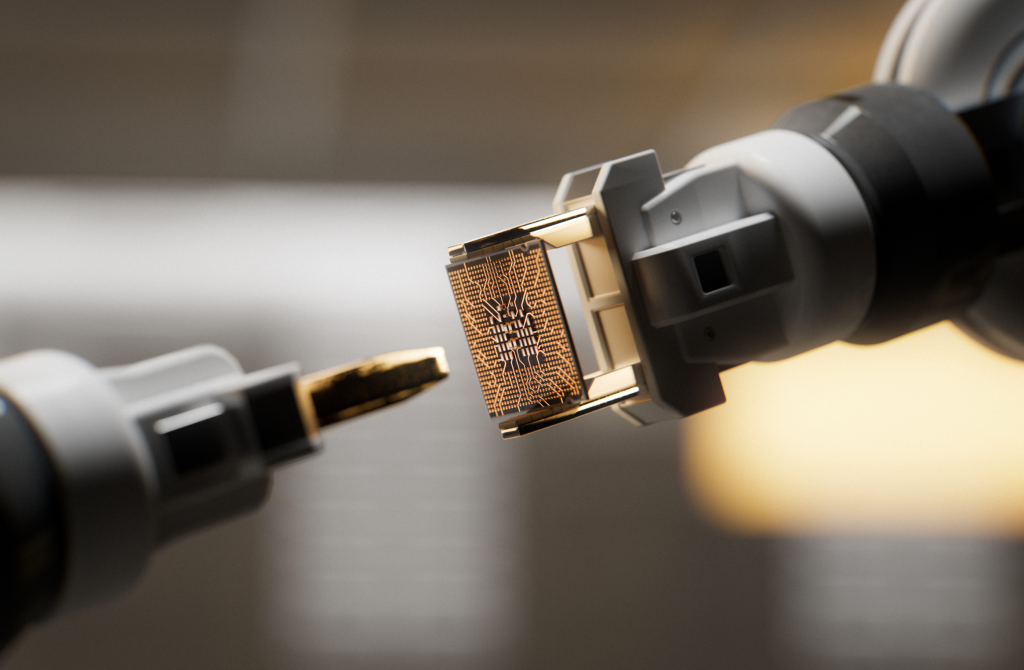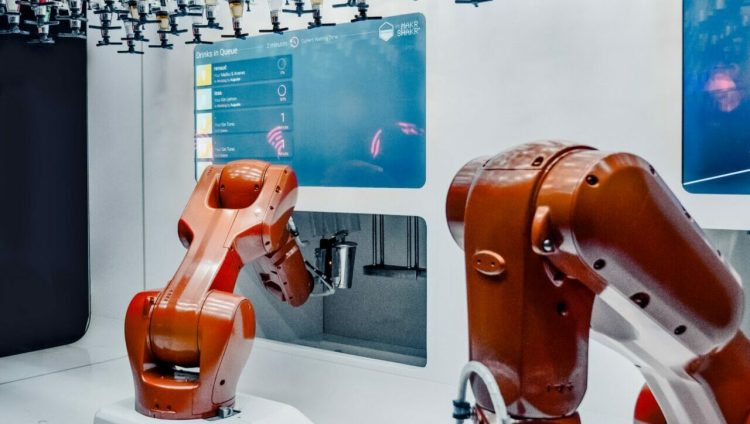Introduction
Robotics is an interdisciplinary field that is making rapid strides, and its applications are becoming more pervasive in everyday life. From autonomous vehicles to healthcare assistants, robots are increasingly being designed to carry out tasks that were once reserved for humans. As robots become more integrated into homes, workplaces, and public spaces, concerns surrounding privacy have risen significantly. These concerns are particularly relevant given that many robots rely on sensors and cameras to collect real-time data about their surroundings, including information about individuals’ behaviors, movements, and even biometric data.
The potential for privacy infringements is especially high in scenarios where robots gather sensitive personal data or operate in environments where individuals may expect a certain level of privacy. In such cases, there is an urgent need to develop regulations and technical measures to prevent privacy violations while promoting the responsible development of robotics. This article examines the key considerations in regulating robotics to protect personal privacy, explores the technical measures that can be implemented, and discusses the ethical implications of robot-based surveillance and data collection.
1. The Need for Privacy Protection in Robotics
Robotics technology is evolving quickly, and with this rapid growth comes the increasing potential for unintended consequences, particularly in the realm of privacy. Many robotic systems—especially those used in homes, healthcare, and public spaces—are equipped with sensors and cameras that gather vast amounts of data. While this data is essential for the functionality and autonomy of robots, it can also inadvertently compromise personal privacy.
For example, personal data such as video recordings, audio recordings, location tracking, and even physiological information can be collected by robots. This raises serious questions regarding consent, data ownership, and how this data is used, stored, and protected. Without clear regulations, robots could easily become tools for invasive surveillance, potentially violating individuals’ rights to privacy.
In this context, it becomes essential to implement measures that ensure robots respect personal privacy and adhere to ethical standards. These measures should provide clear guidelines on what data can be collected, how it should be used, and the responsibilities of developers and manufacturers.
2. Existing Legal Frameworks and Privacy Concerns
Before addressing how to regulate robotics, it is important to consider existing laws and frameworks aimed at protecting privacy in general. Several privacy protection laws are already in place in various regions, though they often focus on digital technologies and not specifically on robotics. Some of the most important global regulations include:
- General Data Protection Regulation (GDPR): This regulation, enforced by the European Union, aims to protect the privacy and personal data of EU citizens. The GDPR establishes clear rules on data consent, data subject rights, and the responsibilities of organizations handling personal data. It includes provisions for data processing, storage, and transfer, which would be relevant for robots that collect personal data.
- California Consumer Privacy Act (CCPA): In the United States, the CCPA provides similar protections for personal data, allowing consumers in California to control what data businesses collect about them and how it is used. This law has significant implications for robots operating in California, as it places a heavy burden on companies to disclose how they use personal information.
- Health Insurance Portability and Accountability Act (HIPAA): In the healthcare sector, HIPAA governs the use and disclosure of personal health information. Robots deployed in healthcare environments must adhere to these regulations to ensure that patient data is not compromised.
Despite the existence of such laws, they are often not specifically tailored to address the unique challenges posed by robotics. This leaves a gap in the regulatory framework that could allow for privacy violations, especially with robots that collect data through constant monitoring.
3. The Ethical Considerations of Robots and Privacy
Ethical concerns play a crucial role in the discussion of privacy protection in robotics. Given that robots often have capabilities that exceed those of humans, such as continuous surveillance or real-time facial recognition, there is a need to carefully consider the moral implications of these technologies.
Some of the key ethical concerns related to privacy and robots include:
- Surveillance and Data Collection: Many robots, especially those equipped with cameras, microphones, and other sensors, collect large amounts of personal data. This raises concerns about surveillance, particularly in public spaces or private homes, where individuals may not be aware of or consent to constant data collection. The lack of transparency regarding data collection can make people feel uncomfortable and insecure, eroding trust in robotic systems.
- Consent and Control: A significant issue in robotic privacy concerns the ability of individuals to control what data is collected about them. Consent is a fundamental aspect of privacy, but when robots operate autonomously, it can be difficult to ascertain when and how individuals are giving consent. This is particularly true when robots are used in environments like hospitals, homes, or offices, where consent may not be explicitly obtained.
- Data Ownership and Usage: Who owns the data collected by robots? The issue of data ownership is crucial in the context of robotics. In many cases, robots collect data that can be linked to individuals, raising concerns about how that data is used and whether it is shared with third parties. Additionally, robots can collect sensitive personal information, such as biometric data, which may be vulnerable to misuse or exploitation.
To address these ethical concerns, clear guidelines must be established for the use of robots in a way that prioritizes the protection of personal privacy and respects the dignity of individuals.

4. Developing Regulations to Safeguard Privacy in Robotics
In order to ensure that robots do not infringe upon personal privacy, governments and regulatory bodies must create specific laws and regulations. These regulations should address the unique challenges presented by robotics while building upon existing privacy protections. Key components of a privacy-conscious regulatory framework include:
- Transparency and Disclosure: Robots that collect personal data should be required to clearly disclose their data collection practices. This includes informing users about the type of data being collected, the purpose of the data collection, and how long the data will be stored. Additionally, robots should have clear mechanisms for users to opt-out of data collection and delete stored information.
- Consent Management: A robust system for obtaining and managing consent must be established. Robots should be designed to request explicit consent from individuals before collecting any personal data, particularly in sensitive environments like healthcare or personal homes. Consent should be recorded and easily revocable, ensuring that individuals have full control over their data.
- Data Minimization: One of the guiding principles of privacy protection is data minimization. This means that robots should only collect the minimum amount of data necessary to perform their tasks. For example, if a robot’s purpose is to navigate a home, it should not collect extraneous data such as voice recordings or facial images unless specifically required for the task. Minimizing the data collected reduces the risks of privacy breaches.
- Data Storage and Security: Regulations should set clear standards for how data collected by robots is stored and protected. Data must be encrypted, anonymized where possible, and stored securely to prevent unauthorized access. In the event of a breach, organizations must be required to notify affected individuals in a timely manner.
- Third-Party Data Sharing: Robots may interact with external systems or third-party services, raising concerns about how personal data is shared. Regulations should specify that any data shared with third parties must be done transparently and with explicit consent. Third-party vendors should also be held accountable for the protection of the data they receive.
- Accountability and Oversight: A key aspect of any regulatory framework is ensuring that companies and organizations deploying robots are held accountable for their privacy practices. Regulatory bodies should establish independent oversight mechanisms to monitor compliance with privacy regulations and conduct audits of robots’ data handling practices.
5. Technical Measures to Protect Privacy in Robotics
Alongside regulations, technical measures must be implemented to protect privacy in robotic systems. These measures can help ensure that even if privacy laws are violated, the data remains secure and individuals’ privacy is still protected.
- Privacy-by-Design: Privacy should be built into the design and architecture of robotic systems from the outset. This includes ensuring that robots have built-in privacy protections, such as automatic data deletion after a specified period or the ability to anonymize data in real time. Privacy-by-design ensures that privacy is a fundamental part of the robotic system rather than an afterthought.
- Edge Computing: With edge computing, data processing is done locally on the robot rather than being transmitted to centralized servers. This reduces the risk of personal data being intercepted during transmission and gives individuals more control over their data. Edge computing can also be used to anonymize data before it is shared with external systems.
- Differential Privacy: Differential privacy is a technique that ensures that data analysis and sharing do not compromise individual privacy. By adding “noise” to data, robots can perform analysis and provide insights without revealing sensitive information about individuals. This technique can be particularly useful in scenarios where robots collect large amounts of data, such as in smart cities or healthcare environments.
- User-Controlled Privacy Settings: Robots should provide users with easily accessible privacy controls. These controls should allow individuals to manage what data is collected, how it is used, and who has access to it. Users should have the ability to turn off sensors or limit data collection when they choose, ensuring that their privacy is respected.
6. Conclusion
As robots continue to play an increasingly prominent role in our daily lives, the need for robust privacy protections becomes more critical. Regulations and technical measures must be developed to ensure that the growth of robotics does not come at the expense of personal privacy. A balanced approach—one that fosters innovation while safeguarding privacy rights—is essential for ensuring that robots can be trusted to serve society without infringing on individuals’ fundamental rights.
Through transparent regulations, clear consent mechanisms, and the integration of privacy-preserving technologies, it is possible to create a future where robotics can thrive without violating privacy. Ethical considerations, such as the right to be informed, the right to control personal data, and the right to security, should guide the development of these regulations. Only then can robotics be fully integrated into society in a way that benefits everyone while respecting their personal privacy.











































